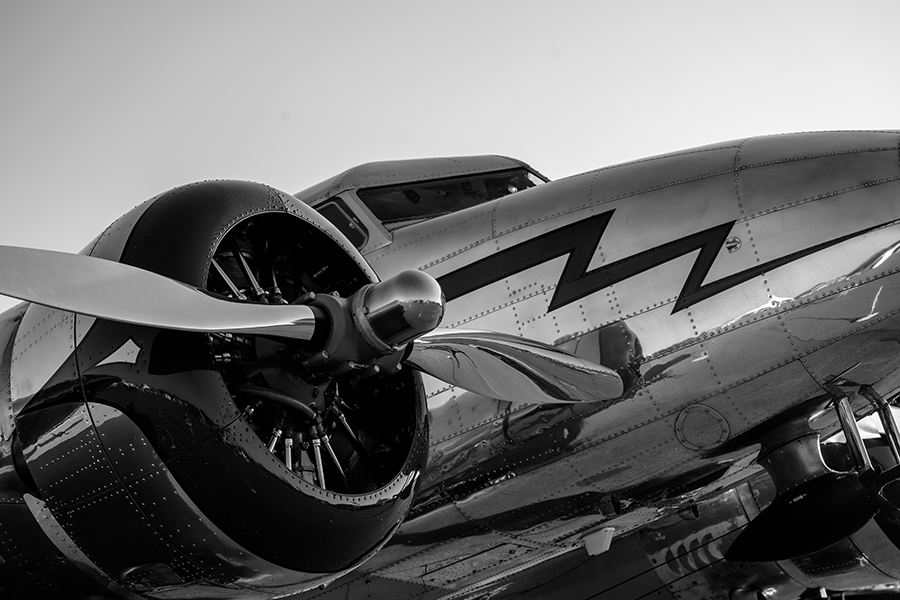
6 minute read
PRO TIPS FOR CAPTURING AIRSHOW PHOTOS
Carolyn Hutchins documents the excitement of Florida’s Sun 'n Fun Aerospace Expo with her Tamron telephoto lenses.
Carolyn Hutchins’ day job is working at central Florida’s Gatorland, where it’s not unusual to see her photographing the crocodiles, birds of prey, and (naturally) alligators congregating in the marshy waters. The nature and wildlife photographer also lives close enough to Florida’s Space Coast so that she often finds herself heading out to take pictures of the various air shows in the area, including the Sun ‘n Fun Aerospace Expo in Lakeland.
“I’m on the photography team for the expo, so I have great access,” Carolyn says. “We photograph a lot more than just the aircraft. Our team is responsible for documenting the entire show, including all of the educational initiatives, the kids’ programs, and whatever else might be happening.”

For this year’s show in the early spring, Carolyn’s Tamron 70-300mm Di III RXD and SP 150-600mm Di VC USD G2 telephoto lenses were ready for the action. “The 70300mm is my walk-around lens, especially when I’m checking out the aircraft before the show,” she says. “It’s compact, lightweight, and sharp. The 150-600mm, meanwhile, which I use on my mirrorless camera system with an adapter, is perfect for when I’m on the ground, trying to capture planes in the sky. I can zoom in to focus on a single aircraft, or I can pull back a bit to capture the wider formations with multiple planes. Also, because I shoot handheld and do a lot of panning when I’m at these shows, the Vibration Compensation (VC) feature on the 150-600mm, with a mode specifically set for panning, is especially handy for helping me avoid camera shake and keep my images sharp.”

There’s not necessarily a “best” vantage point at an air show—“many of my best photos come from taking pictures from the same areas where the general crowd is,” Carolyn says—but she notes that show center can be fun, as are the ends of the runways. “That’s where you can get cool banking shots, where the aircraft fly from one end to the other and then whip around.”
CAPTURING THE SMOKE TRAILS IS A TERRIFIC WAY TO SHOW MOVEMENT IN YOUR PHOTOS.

Making sure her camera is ready for the action is key. “I tend to change my settings a lot while shooting, but I’m usually in manual or shutter priority,” Carolyn says. “If I’m photographing the prop planes, for instance, I’ll shoot in shutter priority, so I can set a lower shutter speed and capture the movement of the propeller. And when the planes are in the air, especially in formation, I’ll almost always shoot in continuous burst mode.”

Images of the aircraft in action are the money shots. “I love taking pictures of the planes flying in formation, especially when they eventually break from the formation and fly off in different directions,” Carolyn says. “Capturing the smoke trails is also a terrific way to show movement in your photos.”

To nail those fast-moving images, Carolyn suggests familiarizing yourself with what goes on in shows like this beforehand. “Go online and watch videos of past performances,” she says. “Or, if you have the opportunity, you head over to the venue the day before the show. The Blue Angels, for instance, will often fly in early and spend that day learning the airspace, as every airfield is different, and practicing their maneuvers.”

If a multiday show is coming to town, attend on the first day as your “practice” day. “This will allow you to see how the lighting lands on the different parts of the runway throughout the day,” Carolyn says. “You can then go back the second or third day with more of a feel for what you’re working with.”
In the early morning, before most people have arrived for the main event, Carolyn will often head to the venue to walk the grounds. “I find I have more time and freedom to capture the aircraft from different perspectives, without too many people around,” she says. “If I’m able to capture the planes at sunrise, when there’s sometimes a lovely Florida mist, my photos can take on an otherworldly feel.”

During those quieter hours is when Carolyn was able to photograph the Lockheed Electra and P-51 Mustang planes seen here in black and white. “The real challenge with these types of static display shots is taking a picture without also capturing your reflection in the chrome,” she says. “That’s where the 70-300mm comes in very handy, as I’m able to back up a bit and then zoom in nice and tight so I can hide myself.”
Some sage advice Carolyn offers for other photographers heading out to document an air show, especially for first-timers: Concentrate on creating photos that intrigue you the most. “If you want to take pictures of the big jets, do that,” she says. “If you want to capture the fireworks that they often feature during the evening shows, do that. The point is, don’t necessarily try to capture everything in one show, like I do as part of the team I’m on. Go in with a particular goal in mind and stick to it.”
ABOUT: CAROLYN HUTCHINS
Carolyn is an outdoor photographer from central Florida, where she has been on a team of airshow photographers for several years. During the shows, she has worked to capture unique images of jets, propeller aircraft, hot air balloons, and static aircraft. After working with DSLRs, she has now transitioned to mirrorless. When not out on active airfields, she enjoys photographing the landscapes and native wildlife of Florida.




